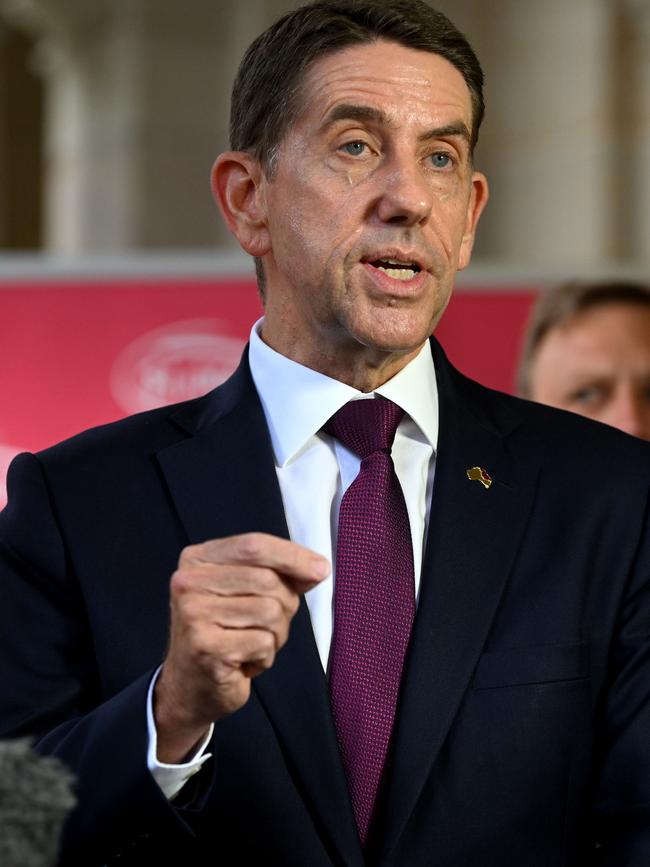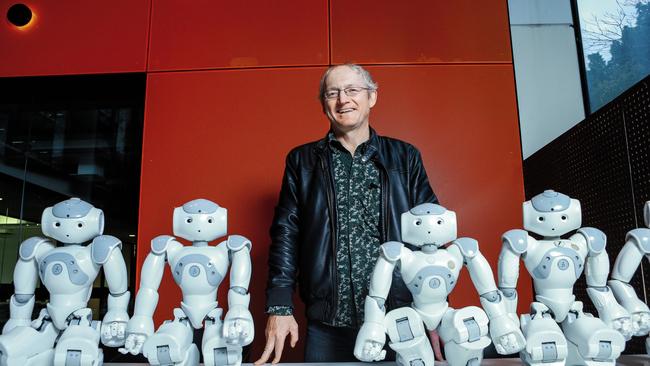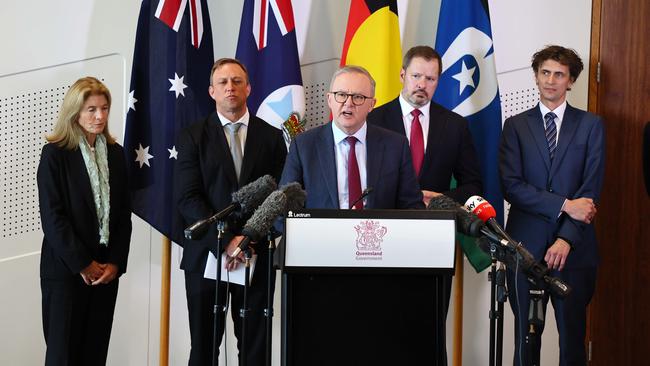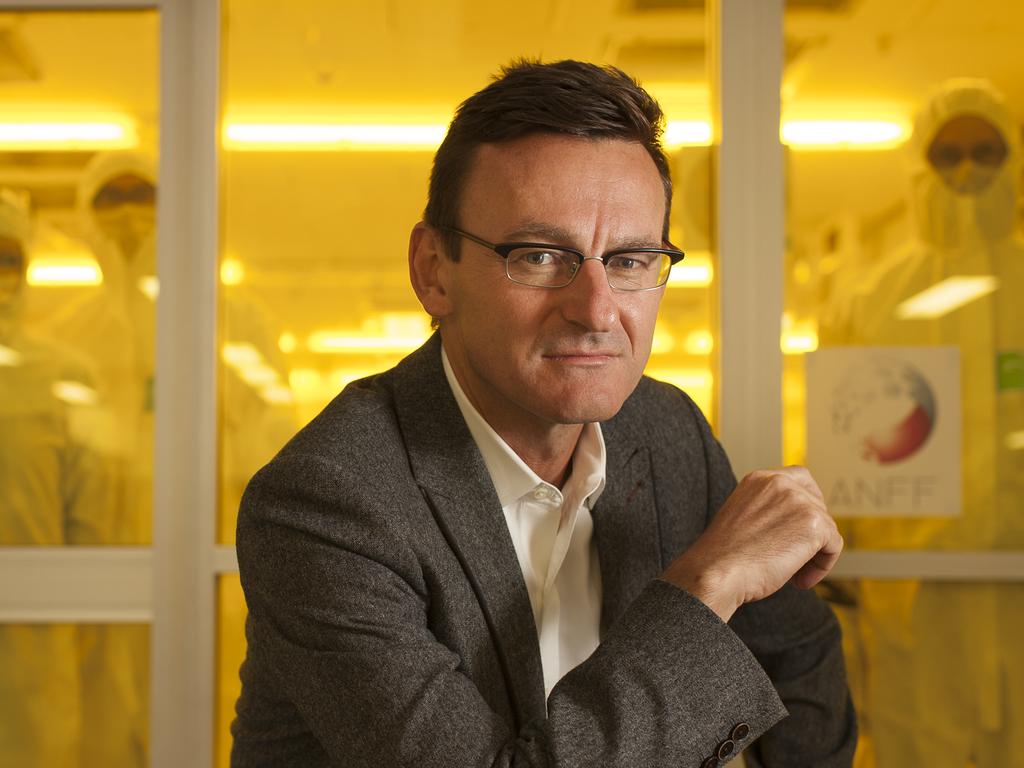‘Decoherence’ marks Labor’s quantum leap into future


Dick joined Anthony Albanese and other distinguished guests for the announcement of a $940m sweetheart deal to lure a Californian start-up quantum computing developer to Brisbane.
It wasn’t so much a press conference as a festival of hyperbole. “This is our Project Apollo,” said Dick. “Quantum computing will have a transformational impact on information technology.”
“This is a quantum leap into the next generation of technology … like the smartphone compared with the landline,” said the Prime Minister. PsiQuantum co-founder Jeremy O’Brien said it would “ignite the next industrial revolution … right here on Australian soil”.
The consensus among those who claim to understand quantum theory is that quantum computing will be a game-changer, so PsiQuantum is hardly alone in the race to overcome its technical challenges. It is competing against most of the IT giants to build the first scalable quantum computer.
One of the main challenges is the problem of decoherence, which occurs when the relationships between different quantum states become randomised, making it difficult to extract meaningful information from the quantum system.
Decoherence is an apt description for the Albanese government since the loss of the voice referendum. The Future Made in Australia policy is best described as a work in progress without clear objectives, strategy or an underlying philosophy.
The PsiQuantum deal, like the $1bn subsidy for solar panel manufacturer Solar SunShot, is a haphazard investment in a speculative project, with a high risk of failure. Both companies were obliged to approach the government because they had failed to attract sufficient private capital. Unless the government is careful, the Future Made in Australia plan will become the last-gasp saloon for lonesome losers down on their luck.

Like driverless cars and green hydrogen, quantum computing is one of those enticing, future-shaping technologies perennially beyond our reach. Malcolm Turnbull boasted eight years ago that his government’s partnership with the University of NSW, Telstra and the Commonwealth Bank would fund the world’s first silicon-based quantum computing circuit, taking the first steps towards building a quantum computing industry in Australia. Yet the 10-quantum bit, or qubit, computer UNSW has been working on for over a decade is a little more than an experiment. A general-purpose quantum computer is likely to require hundreds of thousands or even millions of qubits.


In 2016, Microsoft executive Todd Holmdahl claimed the company was “at an inflection point” in producing a scalable quantum computer using the new technology of topological qubits. The world is still waiting for further announcements.
It is still not clear what success will look like or when it will be achieved. By betting on PsiQuantum, the government is picking a winner without a finishing line.
Neither is it clear just what a super-fast computer will be able to accomplish that isn’t possible with existing technology. Its boosters tell us it will be able to design vaccines in record time, unravel the complex web of climate change and take AI technology to the next level.
Yet there is no way of telling how useful it will be until it is built. UNSW computer scientist Toby Walsh warned last week of falling for the fallacy of the faster-thinking dog. If there was a way to speed up the dog’s cognition, “it would still be a dog, doing doggie things like chasing birds”, Walsh wrote in the AFR. “It isn’t going to start composing sonnets in the style of William Shakespeare.”

Given such uncertainty, a prudent government would do little more than dip its toe in the water. Yet the federal and Queensland governments have jumped up to their waists in support of a company that reckons it is on the cusp of achieving what IBM, Microsoft, Google, Amazon, Baidu and Intel have not.
It inspires little confidence that the tender process was conducted secretly. The government has been less than forthcoming with the details.
When a journalist asked Industry Minister Ed Husic how much of the $940m was in loans and how much was in direct investment, Husic claimed the information was commercially confidential. Yet this is our money. We have a right to know what the likes of Husic are doing with it and on what basis.
The less the government explains, the stronger the stench. The Future Made in Australia policy opens the door to crony capitalism, where the secret of business success is not through competition and innovation but a close relationship with government officials.
Without restraint and transparency, the Future Made in Australia policy will be WA Inc writ large, the pathway to inefficiency, stagnancy and corruption. It leads to a world in which rent-seeking distorts markets, reduces productivity, raises prices, lowers quality and limits choices.
Trust in business and government is eroded as the perception grows that companies benefit because of who they know rather than what they can do.
The justification for the Future Made in Australia policy is that we live in a changed world. Economic rationalism, in which governments stick to governing and businesses to business, is old hat. Albanese told the Queensland Press Club last month that we lived in a brave new world of greater government intervention. “The heavy lifting of economic transition and industrial transformation is not done by individuals, companies or communities on their own,” he claimed.

“None of this is being left solely to market forces or trusted to the invisible hand.”
In other words, the Future Made in Australia policy is a throwback to the past. Albanese is taking the party back to the era before the deregulatory reforms of the 1980s. He campaigned in the 2022 election on an explicit promise that he would govern like Bob Hawke. Instead, the Future Made in Australia policy sets out to undo Hawke’s legacy by reviving the spirit of the socialist objective that had remained dormant in Labor’s national constitution for 40 years.
It describes the Labor Party as “a democratic socialist party with the objective of the democratic socialisation of industry, production, distribution and exchange”.
For all the future-facing, science-fiction rhetoric, Albanese’s legacy will be a quantum leap back to the past.
Nick Cater is senior fellow at the Menzies Research Centre.
More Coverage
 It wasn’t so much a press conference as a festival of hyperbole. “This is our Project Apollo,” said Dick.
It wasn’t so much a press conference as a festival of hyperbole. “This is our Project Apollo,” said Dick.





Never mind the 2032 Olympics. The big news is Queensland has won the bid to host the next moonshot, according to the state’s Treasurer, Cameron Dick.